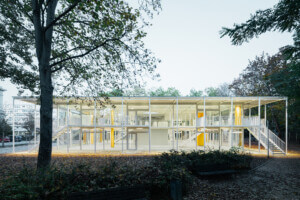Architect: Allmannwappner, Menges Scheffler Architekten
Location:Reutlingen, Germany
Completion Date: 2023
German firms Allmannwappner and Menges Scheffler Architekten collaborated to design Texoversum, a new facility for Reutlingen University of Applied Sciences’ School of Textiles & Design. The new building is part of a larger expansion masterplan for the University. The facade of the building was informed by woven textiles and features a cladding patterned by carbon and glass fiber tiles.
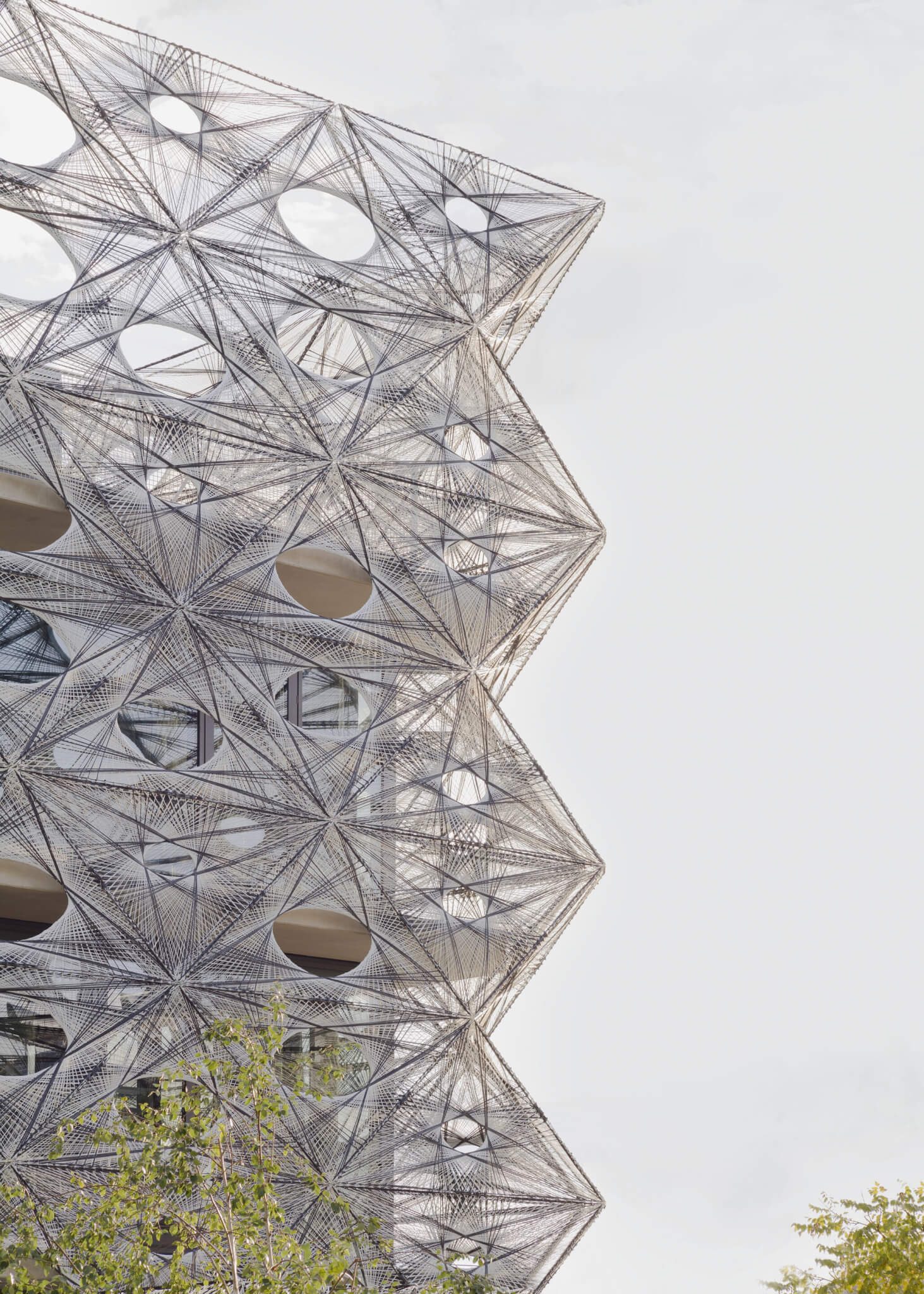
Taking inspiration from its program, the study of textiles, the building’s exterior cladding consists of carbon and glass fiber tiles that were wound using robotic coreless filament winding, a manufacturing process created at the nearby University of Stuttgart. The carbon and glass filaments are set between two rotating windwing scaffolds by a robot. Each of the tiles components was assembled according to five pre-determined templates. Carbon and glass fiber were chosen for their resistance to the extremities of German winter.
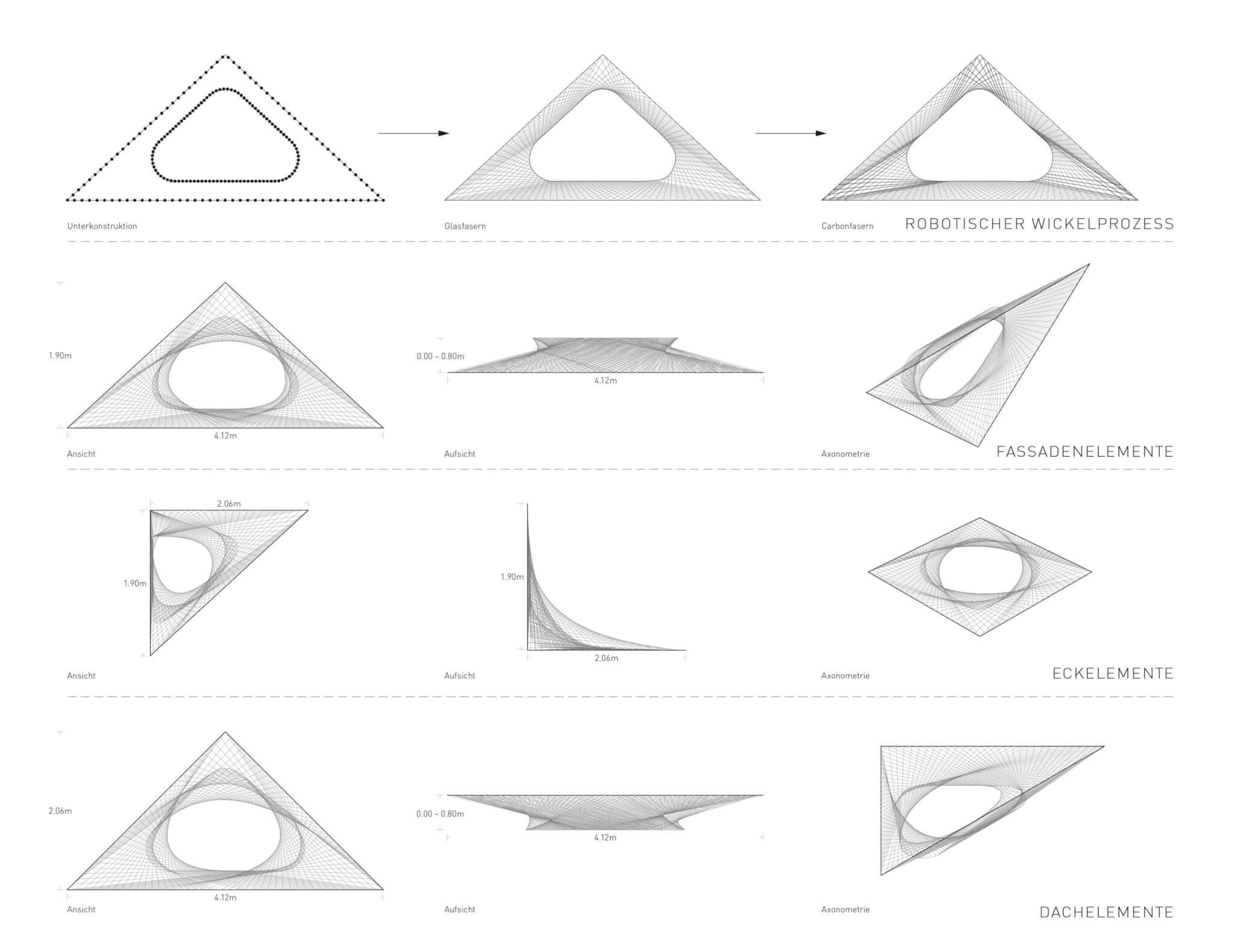
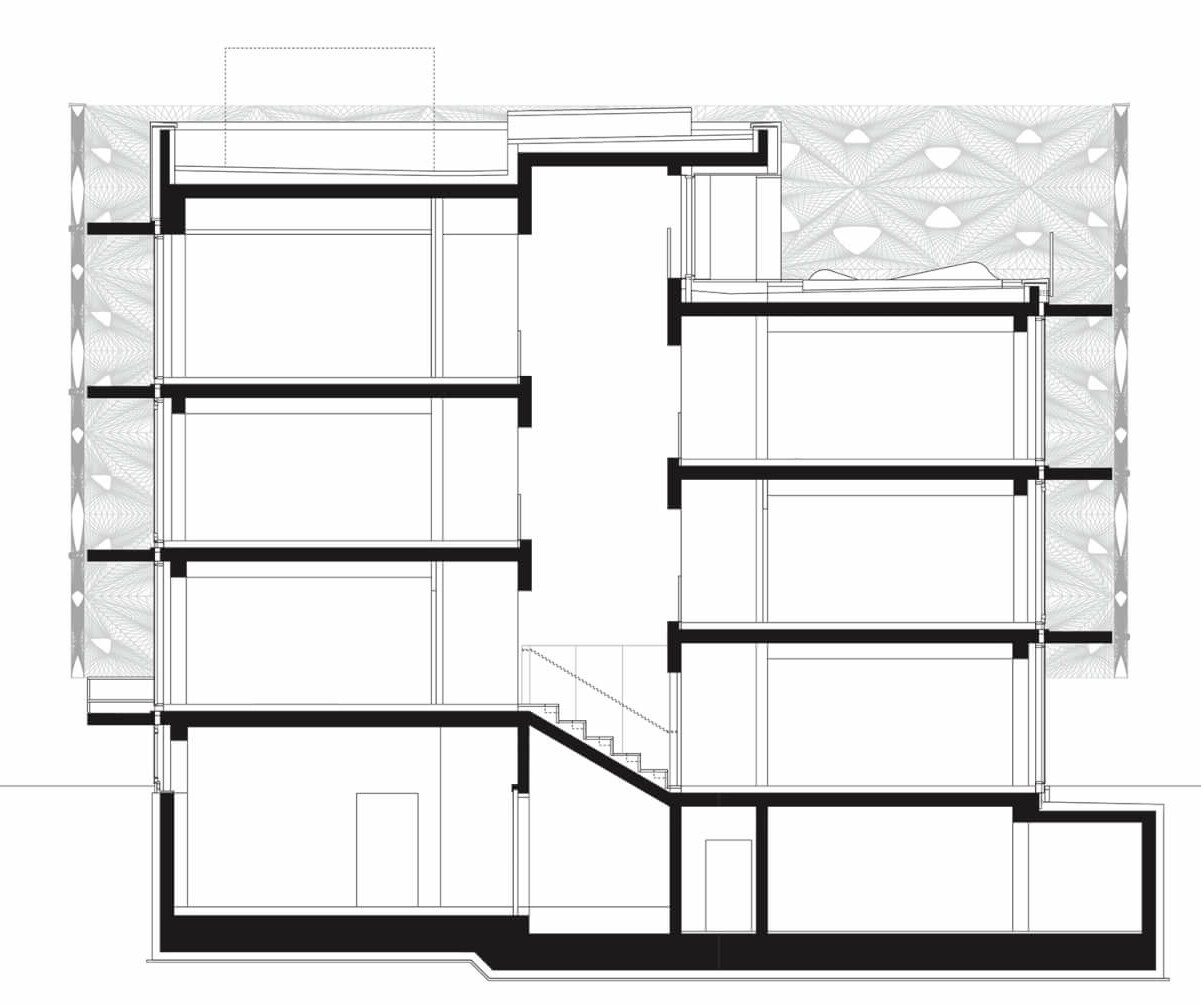
Menges elaborated, “During this process, the predefined shape of the building component emerges only from the interaction of the filaments, eliminating the need for any mould or core. This allows for bespoke form and individual fibre layup for each component without any economic disadvantage. In addition, there is no production waste or material cut-offs.”
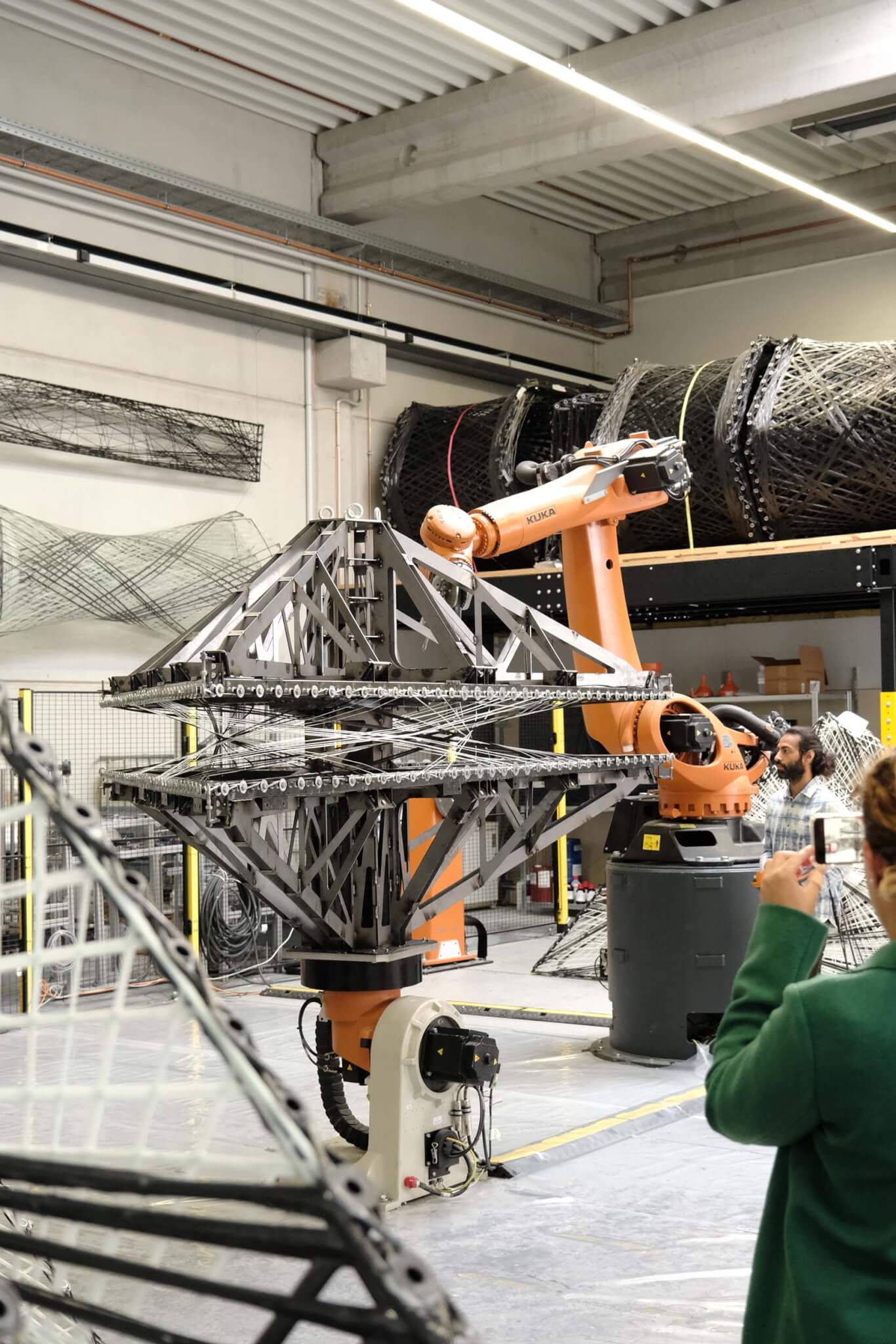
First, a lattice of white glass fibers is assembled. The black carbon fibers are placed to provide structural integrity, while simultaneously creating a distinct pattern in the weaving. The woven facade system was devised and produced by FibR, a company that emerged from research projects at the University of Stuttgart.
The facade was installed with cherry pickers and was expedited due to the fiber units’ relative light weight—less than 60 pounds. The tiles are self supporting, eliminating the need for a load bearing frame. Furthermore, the fabric cladding system acts as a structural balustrade supporting the building’s balconies.
Jan Knippers of Jan Knippers Inegnieure told AN, “We had already successfully built several research demonstrators before, but for the permanent building Texoversum we had to meet the full requirements of the German building authorities for the first time. For this extensive tests had to be carried out to prove the long-term creep behavior, weather resistance, fire resistance and others. During this process, we had to repeatedly adjust the resin formulation.”
The design of the facade system was computer aided, necessitating close collaboration between the architects and engineering consultants to integrate structural engineering and building physics into the digital models.

Central openings were included in the tile design to provide curated views within the structure. The openings were optimized for visibility at occupant eye level—whether sitting or standing. Fiber density within the covered portions of the tiles were subject to extensive testing and modeling to achieve shading requirements. Corner rooms are exposed to the most sunlight, as small openings and high fiber density were concentrated to the corners of the building.
The interior of Texoversum is organized in a split-level layout. Staggered at half-level intervals, the offset stories are divided by a central atrium. Walled with concrete of different finishes and ceilings featuring exposed ductwork, the interior achieves an industrial look. The 32,000 square foot building contains space for workshops, laboratories, and classrooms, as well as a collection of historic textile and fabric samples.
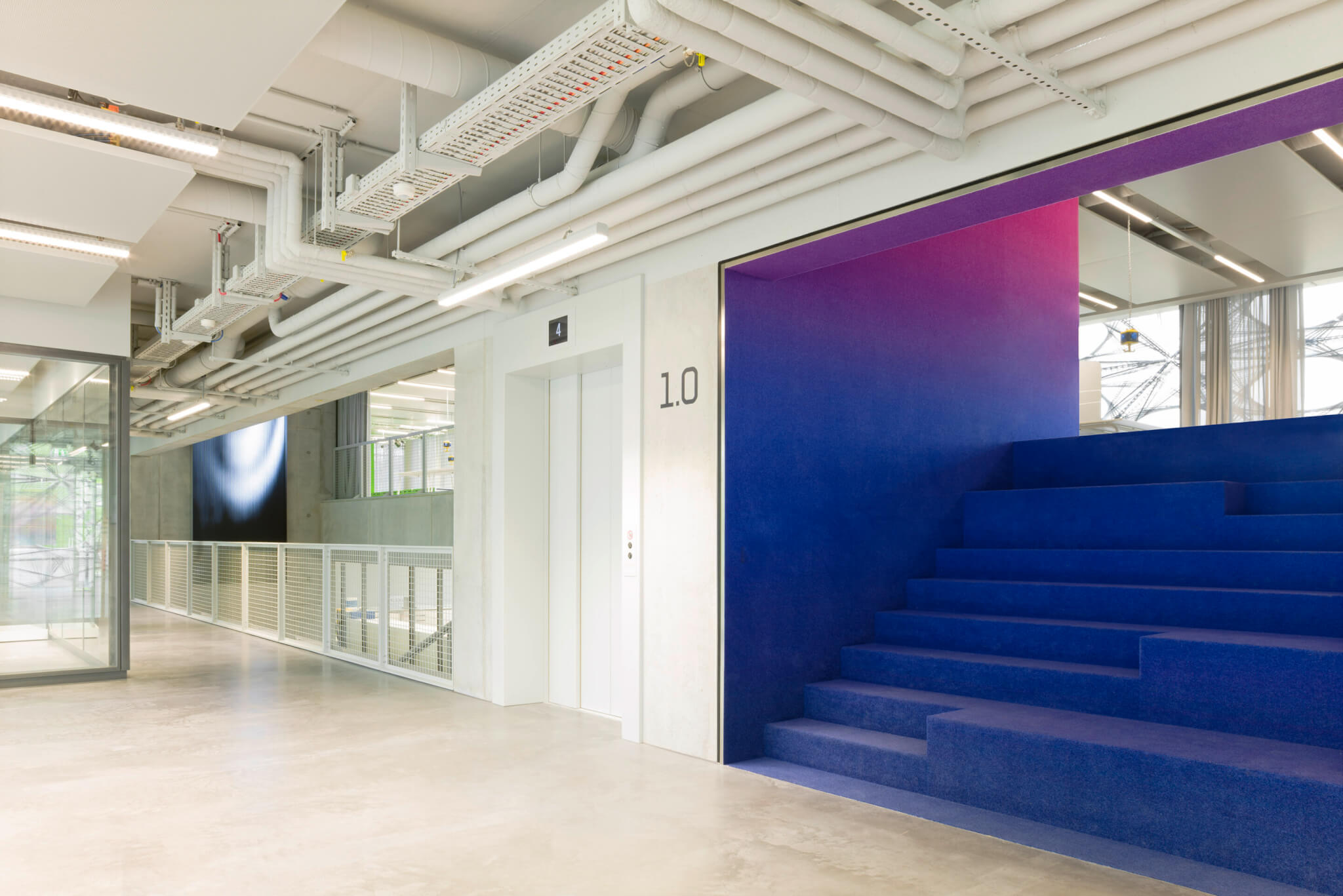
The neutral color palette of the interior is periodically interrupted by pops of color in cut-out spaces which provide a tiered seating area and reference French Gobelin tapestries. These tapestries are notable, among other reasons, for their expert use of color gradation to achieve realistic landscape, figure, and physical depictions.
The building was donated to the University of Reutlingen by Sudwesttextil, a textile trade federation located in Southwest Germany.
Project Specifications
-
- Concept Drafters: Allmannwappner, Menges Scheffler Architekten, Jan Knippers Ingenieure
- General Planning: Allmannwappner
- Object Planning: Allmanwappner
- Object Planning Secondary Facade: Menges Scheffler Architekten
- Structural Planning Secondary Facade: Jan Knippers Ingenieure
- Structural Planning Buildings: bwp Bugraf + Reiminger
- Landscape Design: Gluck Landschaftarchitektur








